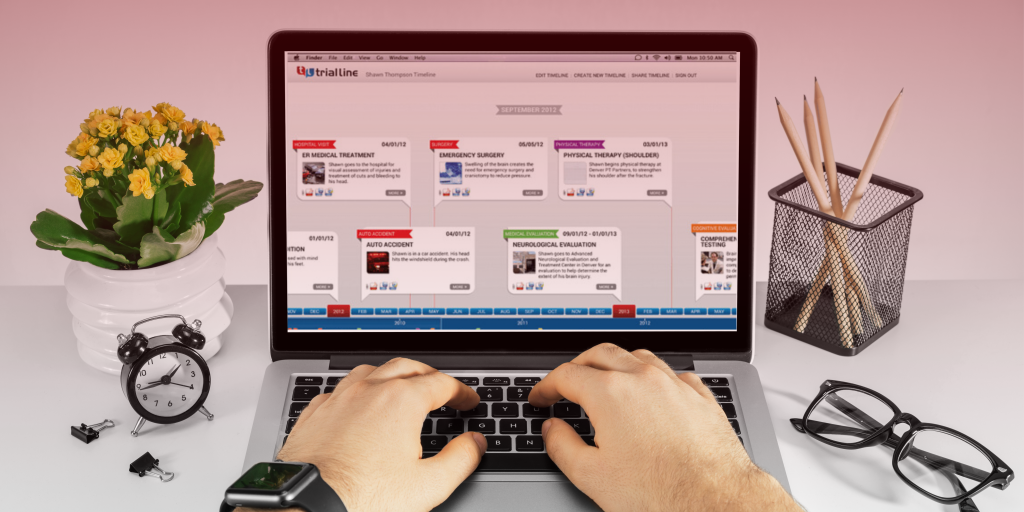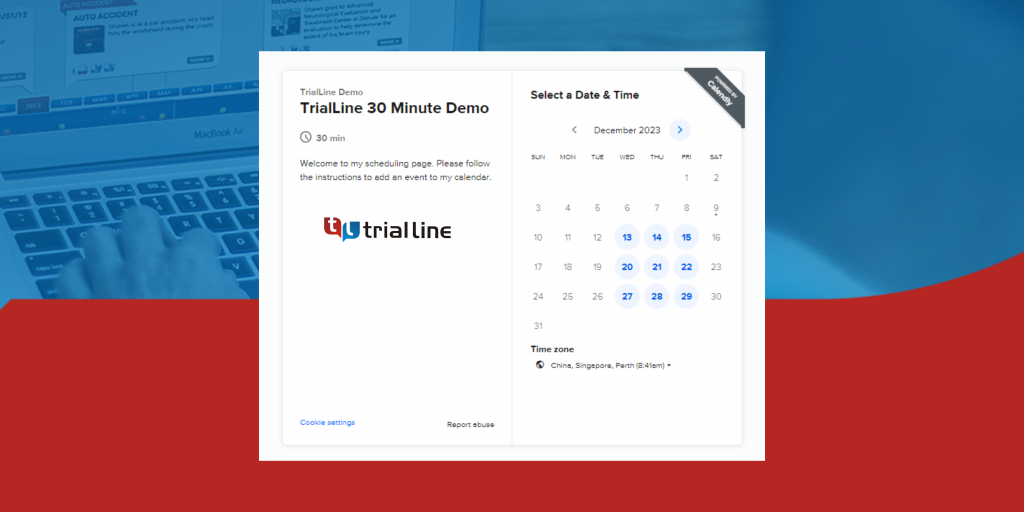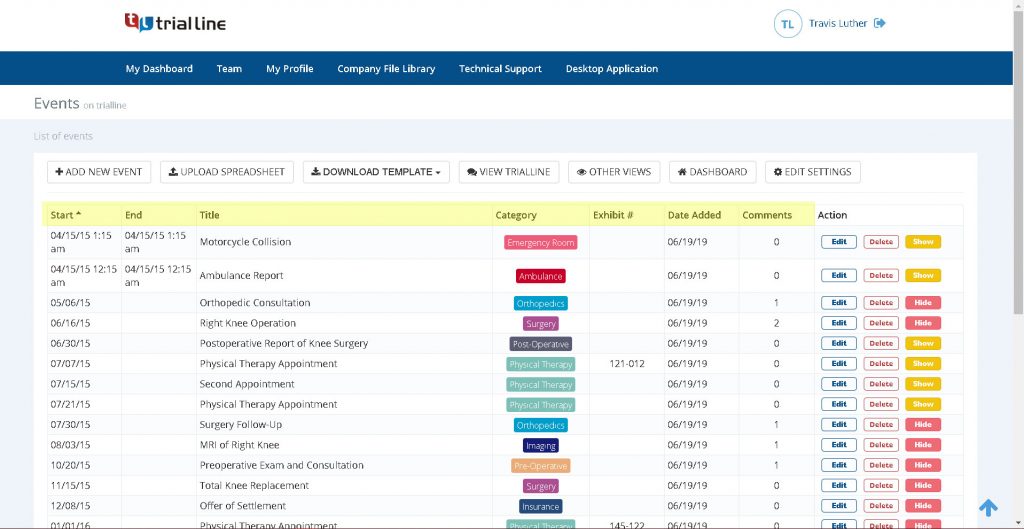In our everyday experiences, we can never predict encounters with those harboring harmful intentions or individuals who disregard precautions, potentially leading to harm. This is where personal injury practice comes into play. It represents the legal acknowledgment of individuals’ rights to pursue compensation for injuries inflicted upon them unjustly. Personal injury lawyers play a pivotal role by representing the injured party, advocating for their rights, and employing case management software to ensure effective representation and enhance the chances of a positive outcome.
Case management software for personal injury serves as a tool tailored to aid lawyers and practitioners in streamlining the handling of personal injury cases. It supports them in ensuring easy access to pertinent information, meeting deadlines, and effectively managing communication with clients and other involved parties. In essence, the software aims to boost the overall efficiency and organization of personal injury law practices.
Understanding Personal Injury Law
What is personal injury law?
Personal injury law is a legal area that deals with cases where individuals have suffered harm, whether physically, emotionally, or psychologically, due to the action or negligence of another party. The primary objective of personal injury law is to provide a legal framework for injured individuals to seek compensation for their losses and damages. This may include medical expenses, lost wages, pain and suffering, and other related costs.
Personal injury cases can arise from various situations, such as car accidents, slips, and falls, medical malpractice, product defects, or workplace injuries. Personal injury lawyers specialize in this area of law and work to represent the interests of the injured party. They help navigate the legal process with the help of legal timeline software, negotiate with insurance companies, and, if necessary, pursue litigation to ensure that their clients receive fair compensation for the harm they have endured.
Goals of Personal Injury Law Practice
Compensation: To ensure that the injured party receives financial compensation for medical expenses, lost wages, pain and suffering, and other damages incurred due to the injury.
Accountability: Holding individuals, businesses, or entities accountable for their actions or negligence that led to the injury.
Prevention: By pursuing legal action, personal injury practice also contributes to preventing future similar incidents. Establishing accountability can encourage responsible behavior and practices.
Access to Justice: Providing individuals with a means to seek justice and fair compensation, when facing powerful opponents such as insurance companies of large corporations.
The practice of personal injury law aims to restore justice by providing means for those who have suffered unfairly to seek legal remedies and obtain necessary assistance. The effectiveness of this pursuit can be significantly enhanced through the utilization of case management software for personal injury attorneys.
Importance of Case Management Software in Personal Injury Cases

Personal injury attorneys have discovered an effective method for handling their cases with efficiency— the integration of personal injury software. This approach not only diminishes the likelihood of facing legal malpractice claims but also contributes to a reduction in the malpractice insurance rates for their firms. Moreover, it aids in streamlining communication between attorneys and clients, eradicating the risk of missed deadlines, and reducing the workload on staff. In essence, for law firms that aren’t using case management software, there is a potential money. Here’s a breakdown of the importance of personal injury case management software to understand why law firms need it.
Organization and Documentation
Personal injury legal case management software offers a centralized hub for all case-related documents, including legal papers, medical records, and pieces of evidence. The system guarantees that crucial files are readily available, minimizing the time spent searching for specific documents.
Personal injury cases involve a multitude of documents, correspondences, and information. The use of case management software aids in the systematic organization of these components. It categorizes and assigns documents to each event in the personal injury case timeline, simplifying the process for legal professionals to locate and retrieve information promptly.
Task Management
To prevent possible issues, specialized case management software for personal injury lawyers streamlines the allocation and delegation of tasks among team members, fostering a collaborative approach. This tool enables users to add comments to specific events in the personal injury timeline and attach documents related to their ongoing work.
It also facilitates a swift evaluation of the status of an event in the personal injury case timeline, allowing for the identification of bottlenecks and prompt corrective actions when necessary.
Communication
In legal practice, successful communication is crucial. Personal injury law software facilitates collaboration among legal professionals, eradicating delays in sharing vital information and fostering a more agile workflow. The software enables the seamless sharing of case-related documents, and users can add comments to specific events or documents within the platform. This feature establishes threaded discussions, ensuring a clear and organized communication trail for all parties involved.
Data Security and Compliance
Handling sensitive information is part of personal injury case management. The adoption of case management ensures the confidentiality and protection of this data from unauthorized access. Robust access control features are in place to regulate and oversee user permissions. This means that legal professionals are granted access solely to information pertinent to their roles, effectively thwarting any unauthorized individuals attempting to review sensitive data.
Personal injury management software aligns with and complies with legal regulations about data protection within the legal industry.
Personal Injury Case Management with TrialLine

Experiencing an injury due to an accident can completely disrupt your life. It might render you unable to work and burden you with medical expenses. If someone else is responsible for your accident or injury, they should be held accountable for the resulting damages. Personal injury cases encompass various situations, including car accidents, slips and falls, dog bites, defective products, and medical malpractice.
The process of filing a personal injury claim can extend over several months or even more than a year, depending on the specifics of your case. To expedite this process, personal injury attorneys often utilize case management or timeline software for lawyers, such as TrialLine.
TrialLine, a litigation timeline software, has found application across various legal domains, including medical-legal consulting, divorce proceedings, criminal cases, and personal injury litigation. In the context of personal injury cases, here’s how TrialLine can seamlessly integrate into the legal process.
The Timeline and Details of Your Medical Treatment for Injuries
In a personal injury case, one crucial aspect is the timeline of the treatment plan. It’s imperative not to finalize a claim until the doctor confirms that maximum medical improvement (MMI) has been achieved, indicating that further medical interventions won’t enhance your condition.
With TrialLine, attorneys and medical professionals collaborate to construct a medical treatment timeline. They can attach essential medical records in each event in the timeline, serving as crucial evidence in a personal injury case. This presents a seamless flow in medical care enhancing the prospects of securing a fair settlement.
Additionally, this approach guards against premature settlement, reducing the risk of accepting a compensation amount that is considerably lower than what a client deserves.
Investigation to Gather Evidence
Determining the cause of an accident may take several months. More intricate cases involving factors like product liability, comparative negligence, premises liability, government entities, and medical malpractice can potentially extend the investigation. A personal injury attorney is tasked with pinpointing the responsible parties and compiling evidence to establish fault.
In a personal injury case, the pieces of evidence can include elements, such as:
- Physical evidence
- Copies of police and accident reports
- Medical records
- Statements from medical professionals
- Insights from experts and accident reconstructionists
- Employment and wage records
- Photographs and videos of the incident
A legal time endeavors to explore all leads and collect evidence. Using TrialLine, trial timeline software, they can efficiently organize all evidence on a unified timeline, linking each piece to a specific event. For instance, the medical treatment timeline may feature medical records and statements annotated through the comment feature. Events related to each contributor may also be selectively shared to avoid bias and influenced opinions.
Documenting Damages and Loses
Compensation for damages in a personal injury case can encompass both economic and non-economic elements. Commonly recognized damages include:
- Medical expenses and bills
- Costs related to personal and nursing care
- Lost income and benefits
- Physical pain and suffering
- Impairments and disabilities
- Reductions in earning potential
- Mendtal and emotional disabilities
- Reduction in earning potential
- Mental and emotional distress
- Loss of enjoyment of life
The amount of the injury claim is influenced by various factors. However, meticulous documentation of damages can enhance the overall worth of your case. In TrialLIne, this documentation is facilitated by creating events linked to the damages, such as accident dates, medical treatments, property assessments, and other relevant incidents. Support these events by uploading pertinent documents like medical bills, repair estimates, and photographs of injuries. Leverage the comment and notes features to include specific details like the severity of injuries and the necessity of medical procedures.
Categorize the timeline to distinguish between types of damages, such as medical expenses and lost wages. Establish connections between events to highlight cause-and-effect relationships. Share specific events selectively with contributors and consistently update the timeline as the case progresses.
While insurance companies may attempt to limit the claim’s value, thorough documentation of damages justifies a higher settlement demand.
Settlement Negotiations
The insurance provider might accept the settlement demand if there is no disagreement on liability, and the demand is deemed reasonable. However, since insurance companies typically present counteroffers, at this juncture, an attorney and the insurance company initiate settlement negotiations.
During this phase, the timeline can be employed to construct a compelling narrative related to specific aspects of the case. It serves as a tool to highlight the strength of your case and has the potential to influence a fair settlement. Additionally, it can be selectively shared with the opposing party to foster open communication and contribute to a shared understanding of the case’s merits.
In the event that the opposing party declines to engage in good faith negotiations, TrialLine can be utilized as a courtroom presentation software when a personal injury lawsuit is filed.
Sign up and Schedule a Demo
Courtroom and law firm technology are widely integrated, but a learning phase is necessary to proficiently navigate their application in cases like personal injury. Elevate your personal injury case management and timeline creation by signing up to TrialLine.Enjoy a 14-day free hands-on experience and gain a deeper understanding of our tool by scheduling a demo with one of our experts.
In search of personal injury case management software? Your solution line with TrialLine.
Disclaimer: The information provided on this website does not, and is not intended to, constitute legal advice; instead, all information, content, and materials available on this site are for general informational purposes only. Information on this website may not constitute the most up-to-date legal or other information.








